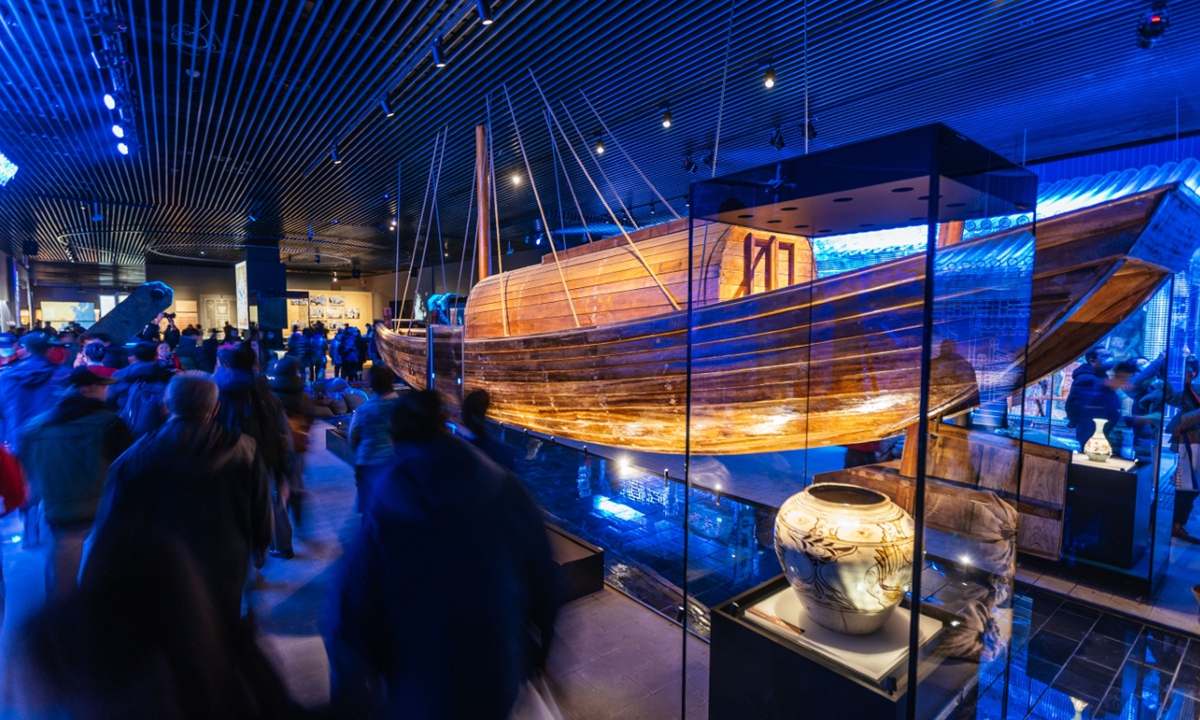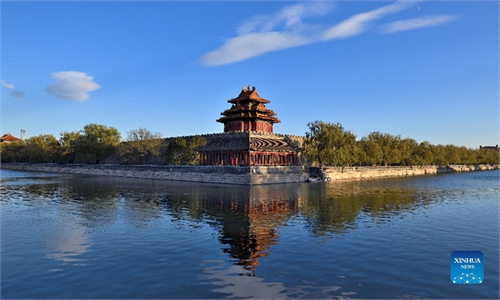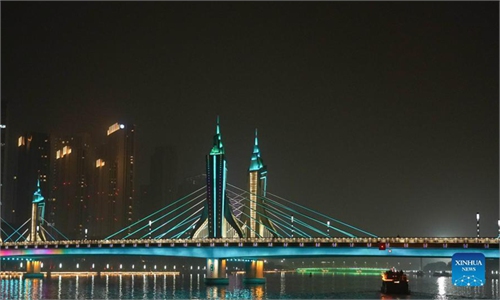ARTS / CULTURE & LEISURE
Three major cultural venues enhance Beijing’s sub-center
Landmarks to boost vitality of capital, adjacent areas

People visit the Grand Canal Museum of Beijing on December 27, 2023. Photo: Li Hao/GT
In Tongzhou, a burgeoning sub-center in the eastern district of Beijing, there stands an enormous museum resem-bling an ancient sailboat. Opened on Wednesday, the Grand Canal Museum of Beijing serves as a captivating show-case of the Beijing section of China's UNESCO world heritage site the Grand Canal.Together with a concurrently unveiled art center and a library nearby, these three architectural mar-vels are set to become new landmarks in eastern Beijing, facilitating functions beyond the capital's primary role and echoing the call from President Xi Jinping for the integrated and coordinated de-velopment of Beijing, Tianjin Municipality and Hebei Province.
Hu Jiulong, deputy director of the Beijing's Sub-center Management Committee, stated that the completion and operation of the three major buildings will greatly enhance the cultural charm and urban vitality of the sub-center.
"This will not only better promote the development of Beijing as a national cultural center, but also meet the demand of the people for a high-quality cultural life in the eastern part of Beijing and the surrounding areas of the sub-center. Additionally, it will promote the coordinated development of the cultural industry in the Beijing-Tianjin-Hebei region," Hu noted.
The new canal museum, situated in the northwest corner of the "Green Heart" Forest Park, began construction in October 2019. It encompasses four types of exhibitions - basic, thematic, temporary and open exhibitions.
"Shortly after its opening, we will also host a Beijing-Tianjin-Hebei coordinated development exhi-bition in May 2024," said Tan Xiaoling, deputy director of the Capital Museum.
As an east branch of the Capital Museum in Beijing, the Grand Canal Museum of Beijing has trans-ported a portion of the relevant collections from the main museum to the new location.
"In addition to items donated by individuals, we've collaborated with over 30 museums outside Beijing to borrow artifacts for display," Tan said.
Among all the new facilities, one of the highlights are the seismic protective measures. At the venue, a total of 242 orange rubber mats provide strong protection for the museum's precious centuries-old cultural relics.
From the seismic exhibition area on the underground floor, through the transparent glass, one can see colossal seismic isolators crafted from rubber and other materials that were designed to minimize potential damage to relics during earthquakes by absorbing seismic waves.
"At the inception of the construction, considering the impact of the subway beneath the museum, we endeavored to minimize vibrations and potential harm to the artifacts. We have implemented extensive seismic protection measures, achieving an overall reduction of seismic waves by 60 per-cent to 80 percent," Zhao Yazhuo, curator of exhibition department of the new museum told the Global Times.
Adjacent to the Beijing-Hangzhou Grand Canal in Tongzhou, the Beijing Library, a new addition to the Capital Library of China, is up and running along with the Grand Canal Museum of Beijing.
Spanning 75,000 square meters, this library boasts the largest outdoor reading area for children and is home to China's most professional art literature hall. Notably, it is the first library in China to showcase a huge self-supporting glass facade.
Cheng Dan, a Tongzhou resident, expressed her eagerness to bring her child to the library, emphasiz-ing the allure of reading in such a beautiful area. She commended the inclusion of a dedicated out-door area for children, deeming it a perfect environment for lifelong learning.
To warmly welcome readers, the library organized a range of immersive activities on its opening day, including concerts, traditional costume dress-up sessions, and woodblock printing workshops. With the aim of fostering a lifelong learning atmosphere, the library plans to host over 1,000 activities an-nually, encompassing seminars, exhibitions, and workshops.
Beyond the library and museum, the recently unveiled Beijing Performing Arts Centre (BPAC) joins the National Centre for the Performing Arts (NCPA) as a new cultural arena. This helps evolve the NCPA into the world's largest art complex, featuring three facilities within a single city.
During the opening ceremony, Wang Ning, head of the NCPA, stated that the introduction of an-other cultural landmark marks a new era of development for the NCPA. The center remains commit-ted to delivering world-class art performances to the public.
Wang added, "Next year, the BPAC plans to host 300 performances and 300 art-related activities. Our future plans include organizing an international canal art festi-val, a musical art festival, and more. This will not only provide the audience with an opportunity to enjoy classic plays at the NCPA, but also introduce modern art forms such as musicals and immersive performances at the new center."



